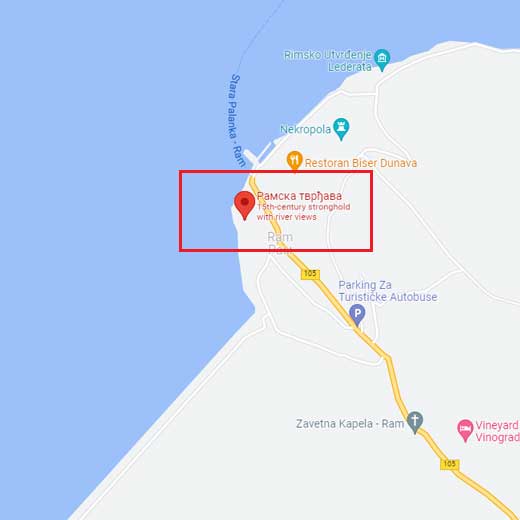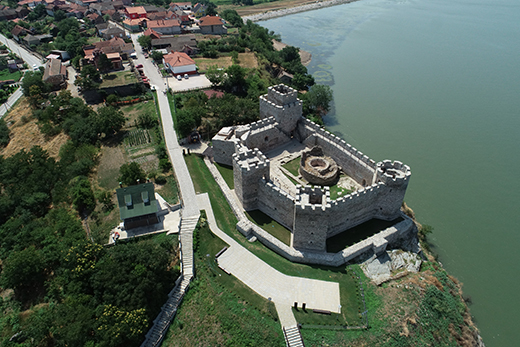Ram Fortress
Protected cultural monument of great significance, listed as AN 102 with the Republic Institute for the protection of monuments of cultural heritage.
Ram FortressRam Fortress, Veliko Gradište, Braničevo District
Where is it
Ram Fortress is located on the right bank of the Danube, 30 km northeast from Požarevac and 15 km from Veliko Gradište, about 100 km from Belgrade. It was built on a rock that steeply descends towards the river, high above the Danube. The access to the fortress was possible from the southeast, and it was entered through the keep that defended the entrance.

Research
Archeological research was done in 1980.
Archeological research and conservational supervision during the renewal of Ram fortress was performed by the Regional institute for the protection of cultural monuments Smederevo. The renewal and reconstruction of the fortress 2017-2019 was financed by the Turkish organization TIKA.
History
Ram fortress was built on the area that was inhabited in prehistoric times. During the Roman conquests, it became a part of Roman limes and in the vicinity, there are the remains of the Roman fortification Lederat.
The oldest mention of the place Ram is from the 12th century, when in 1128 the Byzantines defeated the Hungarians in the vicinity of Ram.
After the Turks conquered Serbia, they moved on to conquer Pannonian Basin. In order to protect the right side of the Danube, sultan Bayezid II built one of the first artillery fortresses in these parts, in 1483.
After the battle of Mohács in 1526, when the Turks defeated the Hungarians, the Ram fortress was no longer strategically important, but just a trade center. It was used for military actions during the Austro-Turkish wars in the 18th century.
During the First Serbian Uprising, Serbian rebels under the command of duke Milenko Stojković conquered the fortress. Later, Vuk Karadžić used to work in Ram as a customs official. The shortest connection to southern Banat was via a ferry that transported both passengers and goods.


Description
In 2019 Ram fortress was renewed, ramparts and towers were completely reconstructed and the inside was arranged so that it represents a tourist attraction of this area.
Ram fortress is of small dimensions of 25 x 35 meters and has the base of an irregular pentagon; the rampart towards the Danube is flat, with towers on the corners. All four towers are of different shapes, but they all had a similar architectural concept. Each tower had a ground floor and three floors with a cannon opening on each floor. The keep guarding the entrance also had three floors and two platforms. The ramparts were accessible by stone stairs that could also lead inside the towers.
The width of the ramparts was between 1.85 and 3.35 meters, depending on the side of the fortress and possible endangerment. The ramparts were made of crushed stone bound with lime mortar, while brick was used for the vaults. Around the fortress there was a trench with two smaller outside ramparts.
In the inside of the fortress, there was a mosque whose remains have been preserved until today.
In the vicinity of the fortress there was a civilian settlement during the Turkish times, and the remains of hammam and caravanserai are still visible. The caravanserai was located on the southeastern side of the fortress, some 50 meters away. It was a powerful stone building for the accommodation of travelers, salesmen, with hearths in each room and embrasures for defense. Inside the walls of caravanserai, in 1839 a church dedicated to archangel Michael was built.
Julka Kuzmanović Cvetkovićarcheologist
